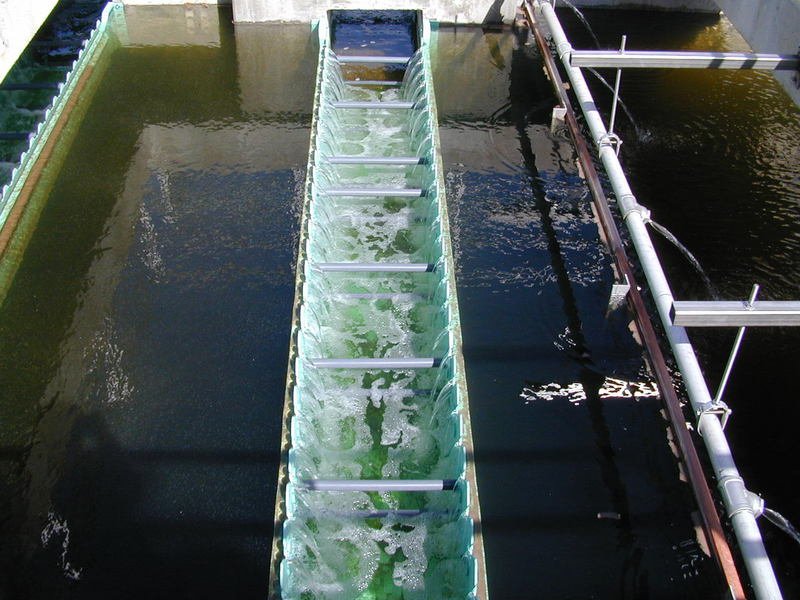
Best Books About Water and Wastewater Treatment

Top 20 AWWA-WEF Books
1. Public Health Effects of Disasters (2021) – Guidance on protecting public health during and after natural disasters, chemical spills and other emergencies that disrupt water and wastewater infrastructure.
2. Activated Sludge and Nutrient Removal (2022) – Provides updated technical details on activated sludge processes, nitrogen and phosphorus removal, troubleshooting guidance, and the latest research advances.
3. Risk and Resilience Strategies for Water Utilities (2022) – Helps utilities assess infrastructure, cybersecurity, financial, climate, and organizational risks. Provides strategies for emergency response, business continuity, and building overall resilience. Includes examples and case studies.
4. Design of Water Resource Recovery Facilities (2021) – The updated guide to the design of wastewater treatment facilities. Covers process selection, equipment sizing, site layout, hydraulics, plant automation, and other key design factors. Includes examples and real-world case studies.
5. Internal Corrosion of Water Distribution Systems (2021) – Provides understanding of internal corrosion mechanisms in distribution systems. Discusses monitoring, control methods, modeling, and asset management strategies.
6. Underground Asset Management (2021) – Provides guidance on developing risk-based asset management programs for underground pipes, valves, and reservoirs. Includes condition assessment methods, data management strategies, risk analysis, capital planning, and case studies.
7. Microplastics in Water and Wastewater (2021) – A comprehensive overview of microplastics pollution, analytical methods, treatment technologies, effects, and mitigation strategies. Includes detailed information on sampling, identification, and quantification of microplastics.
8. Lead Service Line Replacement (2020) – Examines full lead service line replacement from planning and coordination through construction and public communication. Covers replacement technologies, funding, and overcoming challenges.
9. Microbial Quality and Biostability of Drinking Water (2020) – Focuses on maintaining microbiological water quality in distribution systems. Covers monitoring methods, regrowth mechanisms, nitrification, and mitigation approaches.
10. Climate Resilience Evaluation and Awareness Tool (CREAT) (2020) – Outlines approaches for assessing climate change risks and developing resiliency strategies. Includes case studies and a downloadable CREAT software tool.
11. Water Loss Control (2019) – Strategies and tools for analyzing real losses, apparent losses, metering inaccuracies and data handling errors. Guidance on developing efficient water loss control programs.
12. Pipeline Design for Water Engineers (2018) – Covers water pipeline design considerations including pipe materials, pressure, analysis methods, surge control, corrosion, and constructing pipelines across rugged terrain.
13. Municipal Wastewater Plants (2012) – Covers planning, design, operation and upgrade of municipal wastewater treatment plants. Includes in-depth process analysis and energy minimization guidance.
14. Ultraviolet Disinfection (2012) – Examines UV disinfection system design, validation, monitoring, maintenance and operations. Covers lamp systems, reactors, controls, and regulations.
15. Energy Efficiency in the Water Industry (2012) – Strategies and technologies to improve energy efficiency in drinking water and wastewater systems through treatment optimization, pumping, aeration, biosolids management and renewable energy.
16. Biological Wastewater Treatment (2011) – Examines the fundamentals, latest technologies, and current research in biological wastewater treatment. Covers aerobic and anaerobic processes, nutrient removal, membrane bioreactors, modeling and kinetics, and sludge treatment and disposal.
17. Water Quality & Treatment (2011) – The definitive guide to water quality and treatment processes. Includes detailed information on regulations, source water quality, chemical and microbial contaminants, and the principles of treatment systems such as coagulation/flocculation, sedimentation, filtration, and disinfection.
18. Membrane Biological Reactors (2013) – Provides in-depth coverage of membrane bioreactor fundamentals, module and system design, fouling control, modeling, case studies, and applications for wastewater reuse. Includes details on membrane types, configurations, and operating conditions.
19. Water Reuse (2007) – Explores water reuse systems for potable and nonpotable applications. Discusses treatment technologies like membrane filtration and UV disinfection. Examines water quality criteria, risk assessment, regulations, economics, and public perception of water reuse.
20. Water Treatment Plant Design (2005) – Provides comprehensive guidance on all aspects of water treatment plant design, from intake structures to chemical systems to residual management. Covers regulatory requirements, treatment processes, instrumentation, and economics. Includes design examples and case studies.
